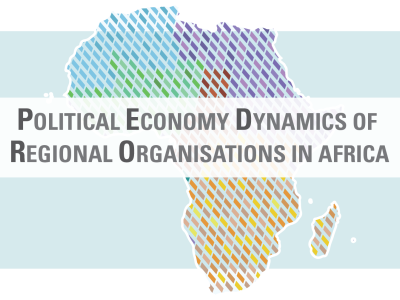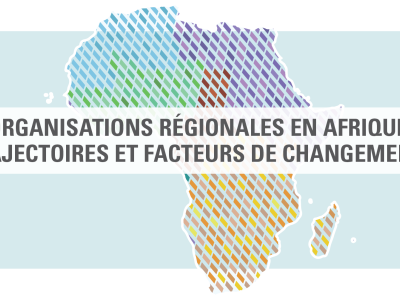
Morocco and Algeria in European migration policies
The migration policies of Morocco and Algeria have drastically changed since the end of the 20th century. Focusing primarily on the migration of their nationals to European countries, they have gradually become involved in ‘managing’ transit migration through their territories.
For Morocco, this first began after the Seville European Council in 2002 when the EU began to see this issue as a beacon for its relations with a number of third countries, and then since the events of the Arab Spring in 2011 that triggered the migration crisis of 2015. As regards to Algeria, the shift started when it signed an association agreement with the EU in 2005, an agreement signed by the Moroccans and the Tunisians ten years earlier.
The Moroccan migration policy: readmission as the sole stumbling block
The first major action undertaken by Morocco at the beginning of this century to respond to European migration demands was the law on “illegal emigration and immigration in Morocco” – Act 02-03 – unanimously adopted in 2003 by the Moroccan parliament following the terrorist attacks in Casablanca on 16 May that same year. Following this, Morocco implemented an institutional and operational framework to support its new migratory approach and best meet the interests of the Kingdom’s special partnership with the EU and particular relations with Spain.
At the institutional level, Morocco established the Migration and Border Surveillance Directorate and the Migration Observatory in November 2003 “to streamline working methods, refine analytical tools and optimise the deployment of operational units to monitor clandestine infiltration points, as well as to consolidate input from all parties concerned by migration issues”, according to Moroccan authorities. Europe expressed its full support for these decisions as they aligned with its objectives, indicating that it is particularly attentive to all developments involving migration on the Moroccan side.
At the same time, at the operational level, the new “Moroccan strategy to combat clandestine migration” opted for a “proximity and prevention” approach through intelligence work, particularly for dismantling human trafficking networks. This approach has been bolstered by a substantial deployment of human and material resources via the implementation of a general and permanent mechanism made up of over 7,000 members, 4,000 of whom are specially tasked with coastal surveillance.
As a result of the combination of this mechanism – the largest ever implemented – to survey Morocco’s Atlantic and Mediterranean coasts, Spain’s Integrated System of Exterior Surveillance in southern Spain, then off the Canary Islands, and the intervention of Frontex (the European Border and Coast Guard Agency), crossing territorial waters between the two countries has become particularly perilous. These measures prompted, to a large extent, the EU to grant Morocco alone, out of all the countries in the region, the position of special partner in 2008. The document on Morocco’s “advanced status” defined its objectives as “supporting the internal dynamics which Morocco is experiencing and accelerating the partnership between Morocco and the European Union”.
More recently, since the end of 2013, and as Morocco was beginning to enjoy a kind of “migratory peace” with less than 0.4 per cent of all trans-Mediterranean migration passing through its territory and maritime space in 2015 (see table 1), the country has adopted a “new migration policy”, one described as “more humanist” and founded on the regularisation of certain categories of migrants and on a national strategy for integrating migrants and refugees. This new policy was triggered by a report by the National Council for Human Rights, which itself followed a documentary on migration in Morocco broadcast by the BBC in September 2013.

Accordingly, an initial regularisation process for migrants enabled 18,000 irregular migrants to obtain a residence permit in 2014. A second regularisation campaign in 2017 benefited 21,000 irregular migrants, involving 113 nationalities, most of sub-Saharan origin. This same year, however, the number of migrants transiting through Morocco increased, as shown above, by 130 per cent compared to 2016, before rising to over 31,000 at the beginning of September 2018.
During the first eight months of 2018, the Moroccan security services blocked over 54,000 irregular immigration attempts, dismantled 74 human trafficking and smuggling networks and seized 1,900 boats. At the same time, since July 2018, the Moroccan security services have expelled thousands of sub-Saharan migrants from Morocco’s Mediterranean shores to cities in the country’s interior, provoking an outcry from human rights organisations which claim that Morocco’s “new migration policy” is no longer relevant. These developments show that nothing can ever be taken for granted where migration is concerned and that each time one migration route closes, another opens. The surge in migration through Morocco could be related to the closure of the Libyan route following a series of measures by the Italian government including restricting the work of NGOs in the Mediterranean and increased training for the Libyan coastguard.
Nonetheless, the EU has always asked Morocco, like other African countries, to firmly manage migratory flows from its territory, including through the signature of a “readmission agreement” with the EU. Morocco has yet to sign this agreement, however, despite nearly twenty rounds of negotiations due to concerns about sovereignty and to the fact that it has no desire to be known indefinitely as “Europe’s policeman”. But the main reason for its refusal also relates to something else: for Morocco to agree to it, Algeria, too, would have to accept a similar agreement. Yet the idea of negotiating such an agreement with Algeria has rarely been raised. Moreover, if such agreements were signed with all the sub-Saharan countries of departure, there would no longer be a need to negotiate them with the transit countries in North Africa.
Algeria: the end of ‘indifference’
Algeria is a major country of emigration, even if the number of Algerian migrants is far lower, both in Europe and elsewhere, than that of Moroccan migrants. When it comes to sub-Saharan migration – particularly with respect to “transit migration” – Algeria has for long claimed that it is not concerned by this issue, even though virtually all irregular migrants passing through Morocco on their way to Europe pass through Algerian territory
This position is based on a myth perpetuated by public discourse which asserts that Algeria is more a country of settlement for sub-Saharan migrants than of transit. The Algerian authorities’ framing of the migratory question hints at the various elements of conflict inherent in the Algerian–Moroccan relationship. Besides, the Algerian authorities do not wish to appear as lacking solidarity with sub-Saharan Africa, as opposed to the general perception of Morocco’s migratory approach before 2014. One however can discern a European influence in Algeria’s handling of the migration question, including the control of its borders – yet much less pressing than in Morocco’s case. This is probably due to the country’s natural resources (and economic weight), which is incommensurable with that of its immediate neighbours, Morocco and Tunisia.
Algeria’s position has gradually changed since 2002 and 2003 with the start of the 5+5 group meetings and the signing of an agreement establishing a free-trade area between Algeria and the EU in April 2002. The events of August to October 2005 – when hundreds of migrants forced their way into the Spanish territories of Ceuta and Melilla, resulting in some fifteen deaths and dozens wounded – had, at last, played a very important role. Morocco, Spain and the EU all used these events to call on Algeria to become more involved in controlling the southern borders of the Maghreb and in fighting migrant smuggling networks.
Carrying out hundreds of expulsions of sub-Saharan migrants starting in the autumn of 2005, Algeria did not, however, take part in the Euro-African Ministerial Conference in Rabat in July 2006, since it did not wish to commit itself in the same way as Morocco had on the migration issue, but also because it wanted to give the impression that it would not be a country of either departure or transit for irregular migrants. Yet this would not prevent it from passing – like the Moroccans (in 2003) and the Tunisians (in 2004) – a law in 2008 on the conditions of the entry, stay and movement of foreigners in Algeria. The law penalises irregular immigration and punishes those who employ, house or assist irregular migrants.
With the conflict in Libya and fragile security conditions in Tunisia following the ‘Arab Spring’, Algeria saw an increase in migrant arrivals between 2011 and 2015 – becoming “an anchor point for migrants from Central and West Africa” (according to some estimates, over 100,000 on its soil). But these migrants benefited Algeria, too, as “at times, the authorities have recognised that they were necessary for the development of the economy, plugging the labour gap in the public works and agricultural sectors”.
Yet the fall in oil prices in international markets and the ensuing financial crisis complicated the issue of residence for immigrants in Algeria. Many have been the object of numerous deportation operations over the last few years. According to the International Organization for Migration (IOM), over 4,100 individuals were deported from Algeria in May 2018, and over 11,276 in total between September 2017 and June 2018. At the same time, a sharp increase in Algerians departing irregularly has been recorded in recent years. According to Frontex over 4,200 irregular arrivals from Algeria occurred in 2017, as opposed to nearly 1,700 in 2016.
Conclusion
The Algerian Migration Act 2008, which has not been amended since it was passed, gives the authorities the prerogative to expel foreigners who have entered Algeria illegally or whose visas have expired but does oblige them to notify the person concerned, who then has between forty-eight hours and fifteen days to leave the country. But according to Human Rights Watch, thousands of migrants were expelled from Algeria with no recourse to such notification between January and May 2018. Despite announcing the implementation of a new, more humanist migration policy in 2013, Morocco, for its part, carried out a number of aggressive operations to remove hundreds of migrants from its Mediterranean coast during the summer of 2018, but without expelling them from the country. This shows that the two countries are now approaching the migration issue in virtually the same way. They face a double challenge of the same nature which consists in preserving their respective interests at home and in relation to the countries of sub-Saharan Africa and the European Union, while acknowledging that the problems posed by irregular migration – which will worsen in the coming years – are solved in the countries of departure.
About the author
Mehdi Lahlou, University Paris – I, Panthéon – Sorbonne (Paris, France), is Professor of Economics at the National Institute of Statistics and Applied Economics (INSEA, Rabat, Morocco). He is associated professor at the University Mohammed V (Rabat). Teaching ‘’Public economy’’, ‘’History of facts and economic ideas’’ and ‘’Moroccan economy’’. He is the author of several contributions and reports on the topics of Migration, Education, Professional training and employment, Sustainable development (in North Africa and Sub-Saharan countries, particularly), Water management and Climate change, etc ….. He is the Honorarium President and founder of ACME-Morocco (Association for a World Contract on Water); he is also member-founder of the ‘’Common good University’’, Brussels, 2002; member-founder of the World Alternative Forum on Water. Founder, in 2006, of the Open University on “Migration, human rights and development”.
Read the full magazine issue








